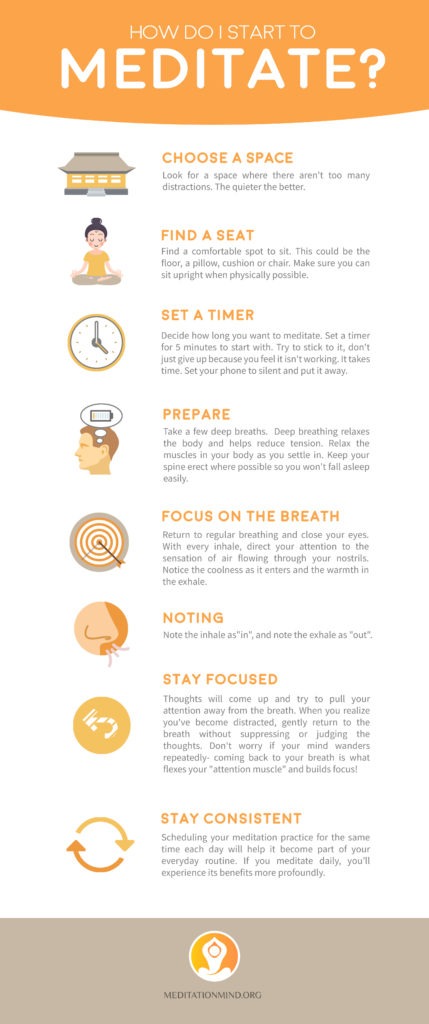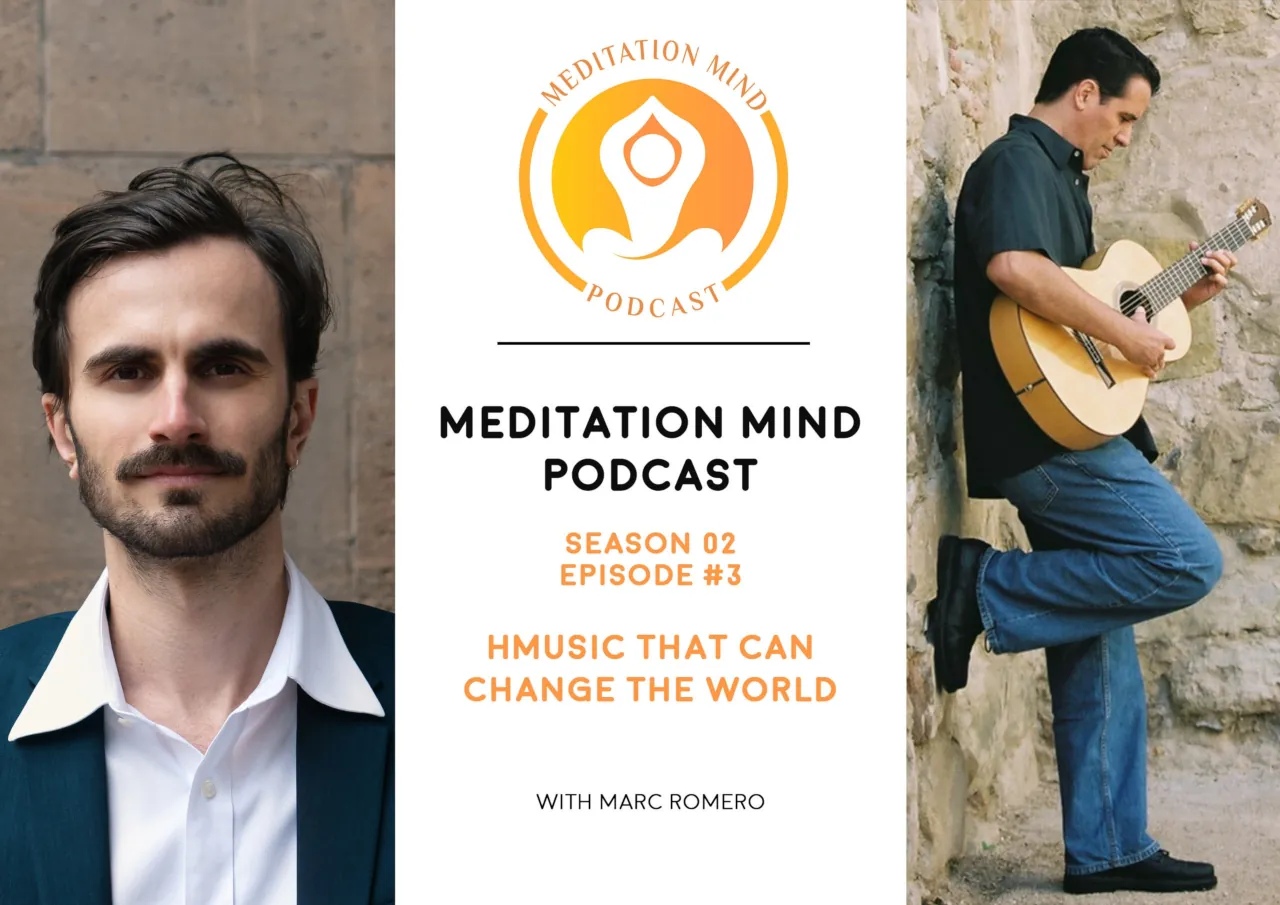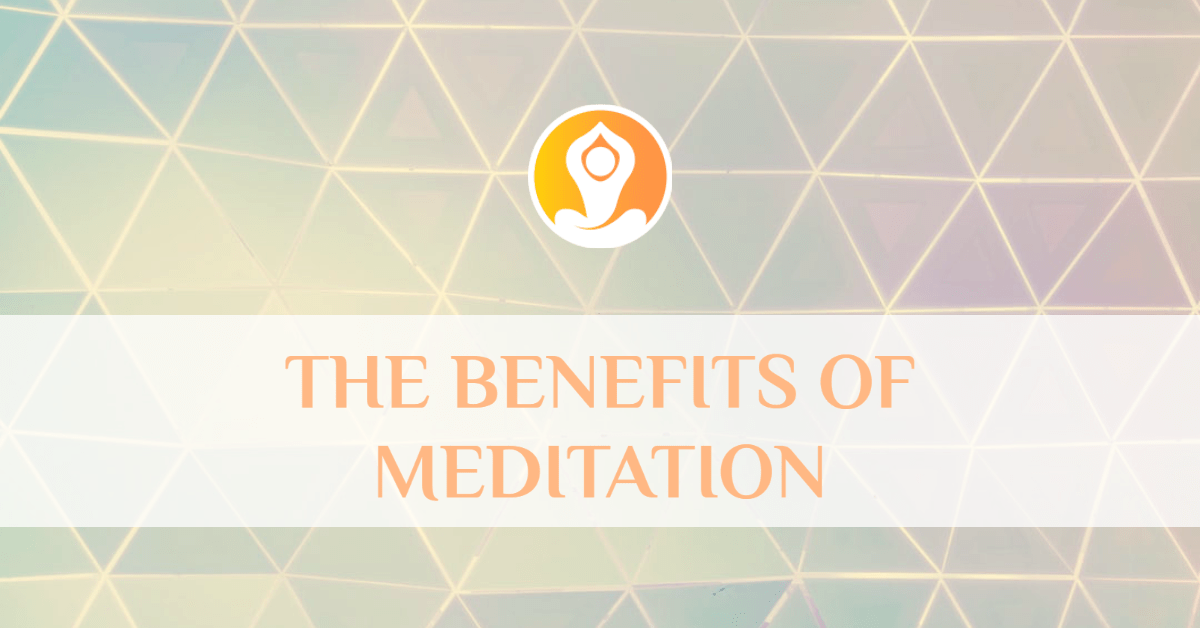“It always seems impossible until it’s done.”
Nelson Mandela
We often get the question “How do I meditate?” or “Where should I start with my practice?” in our online community about meditation & mindfulness. We’ve created an easy and accessible way for you to start with your meditation practice. It involves 8 steps. In these 8 steps, we explain where to start, what you’ll need and what to do. Plain, clear and simple. This is the beginning of your journey on the path of training your mind. Let’s get going!

8 simple steps to start your meditation practice
1. Choose a space
First things first. Make sure your environment is allowing you to take this time for yourself. In a noisy environment, it will be hard to start your practice. Make sure you can be in a space for a certain amount of time without others disturbing you. It doesn’t need to be complicated, you can dedicate a space in your room. Simply tell your loved ones you don’t want to be disturbed for 5 minutes and put your beloved pet into another room. The quieter the better.
2. Find a seat
Next, make sure we have a comfortable place to sit. Take off your shoes and put on something comfortable to wear. Use a pillow, cushion, a chair or a knee bench for sitting. Make sure this is comfortable to sit on, yet also make sure your spine is erect. Posture is very important because it signals your body what to do. A straight posture will signal your body to be aware. However, don’t force yourself, do what is physically possible for you.
3. Set a timer
Decide how long you want to meditate for. It is important to set the intention of your practice. We recommend starting with as little as 5 minutes. It is better to start small and add time, later on, then to quit earlier because you’ve made it too hard for yourself. Stick to the time you intended to practice for. Don’t just give up because you feel it isn’t working. It takes a little time to train yourself. Set a timer on your phone, switch it to silent mode and put it away. You are ready to begin this journey.
4. Prepare
Time to prepare your body and mind to meditate. Take a few deep breaths. Deep breathing relaxes the body and helps reduce tension. One technique is to use a 2-to-1 breathing ratio. A longer exhale than inhale will signal to your body that it can relax. This is a great way to release tension and settle into your meditation practice. No need to rush, take the time to do this mindfully. Relax the muscles in your body as you settle in. Keep your spine erect where possible so you won’t fall asleep easily.
5. Focus on the breath
Now it is time to direct your attention to the sensation of air, flowing in and out of your nostrils. Be aware of the sensation of your in-breath and out-breath on your nostrils. If you find this hard to do, simply direct your attention to the rising and falling of your belly. With every breath, you feel the sensation of your breathing in these parts of your body. This is called mindful breathing meditation. Let your full awareness be in this meditation practice.
6. Noting
Here we start with a technique called ‘mental noting’. We note every in breath and every out-breath. This can simply be done by thinking “in” when you breathe in, and thinking “out” when you breathe out. Do this a few times and you will notice the mind begins to settle down. If you become agitated or annoyed, make sure you are comfortable, don’t force yourself in breathing patterns & simply bring your attention back to the noting. With patience and persistence, we can establish your meditation practice.
7. Stay focused
Don’t worry, it’s normal your mind will begin to wander off. It will start to think about things you need to do, things someone said to you that day or the fact that you haven’t called your mom in a while now. Basically, thinking about the future and the past. It is normal for your mind to drift off, this does not mean you fail. Returning from wandering off to your meditation practice is you building up focus. It is you training your awareness to be directed. Remember to be gentle with yourself. It takes time and persistence. Gently direct your attention back to your breath. Simply notice your thoughts, become aware of them and return to the method.
8. Stay consistent
The timer goes off. You might feel refreshed or actually tired. Congratulations, you’ve done your first meditation session!
This is the beginning of your journey. To make it work, schedule a time you want to dedicate to practice. Make it part of your everyday routine. Pick a time of day that works for you and commit to doing it at or around this time. We recommend somewhere in the morning or evening, just after you wake up or before you go to bed. If you meditate daily, you’ll experience its benefits more profoundly.


